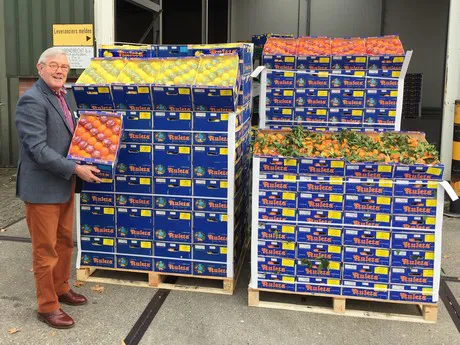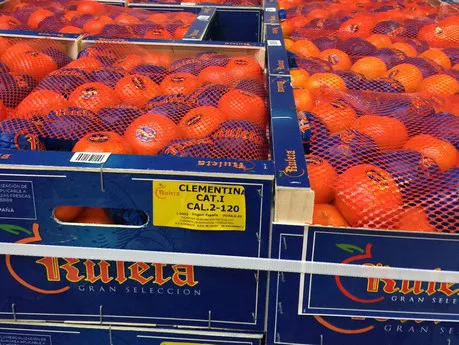Large or small harvests, large or small sizes: it doesn’t matter either way to Leo Pels of the Dutch import company of the same name. In his long career in citrus, he’s seen it all. He prefers taking a step back and looking at the larger trends now seen on the citrus market: overproduction, (too) specific product requirements and more.
“The harvest is larger this year, but more of the citrus has small sizes. The small sizes aren’t sold, so we’re having a regular season,” Leo says. The quality of the fruit is “very good,” yet he doesn’t feel entirely positive about the season: “The good sizes are so cheap that the small sizes can’t be cheap enough to sell.” For the growers, the harvest of small sizes is much more labour intensive. “The citrus is still picked manually,” Leo explains. “A grower therefore spends much more time on small sizes.”

Larger production and new varieties
The trader mentions other structural problems on the market. “The production of citrus is high globally, as is the production of grapes and bananas. The market is glutted, it doesn’t want the product we have a lot of Perhaps it’ll be different in the second half of the season.” The market looked different in the past. Import of Spanish citrus used to be a speciality. “I could sell all varieties and sizes on the market, but that’s no longer the case. The larger production is the biggest competitor of the sector.” Besides, logistics have changed. The world has become smaller, as Leo describes it. It’s easy to be in contact with Spain, and thanks to containerisation, import from other continents has come within reach for more importers.
Some growers choose to plant new varieties. “These new varieties are planted in the hope they’ll yield more. They have to know this years in advance.” He mentions the impossibility of the task growers are faced with. The growers have to make decisions years in advance. “They must have what isn’t on the market yet.” Yet this movement is continuing. Old varieties have disappeared. Leo remembers tangerines of several decades ago, which had a fragrant aroma but contained dozens of pips. With the rise of seedless varieties and varieties with just a few pips, these older varieties were driven to the margins before disappearing completely. “More and more varieties with large sizes were grown as well, so the small-sized varieties also disappeared. Consumers don’t want these.”
Harvesting later for better fruit
In supermarkets, shelf space for citrus is under pressure from the longer seasons of summer and stone fruit. “There’s less and less space for oranges,” he says. “I’m convinced the consumption of oranges will decline. Younger consumers no longer know how to peel an orange.” Consumption of tangerines will increase, in part because seasons are becoming longer. Juicing oranges do well because of the juicing machines. That is to say, citrus with a size of 70 to 73 millimetres does well. That size fits in the juicing machines. “Customers only want one size now: 90. It’s difficult to grow oranges that are all the same size,” Leo says.

Between all of the developments, Leo steers a middle course with the Ruleta and Bonaparte labels. “We try to take our place on the market and be distinctive by only supplying the best fruit at the right time,” Leo says. He’s been in business with the Gonzalez family for more than 35 years. That means, among other things, that the start of the season is structurally a few weeks later than for other companies. The Navelinas are available for about three or four weeks by the time Leo markets his first citrus. It’s similar for the tangerines. “We’re always one of the last to start, but the fruit is much better and has a better flavour then. It isn’t about what you buy today, but what you buy tomorrow.”
More information:
Leo Pels Import
Leo Pels
leopels@leopelsimport.com
www.leopelsimport.com
